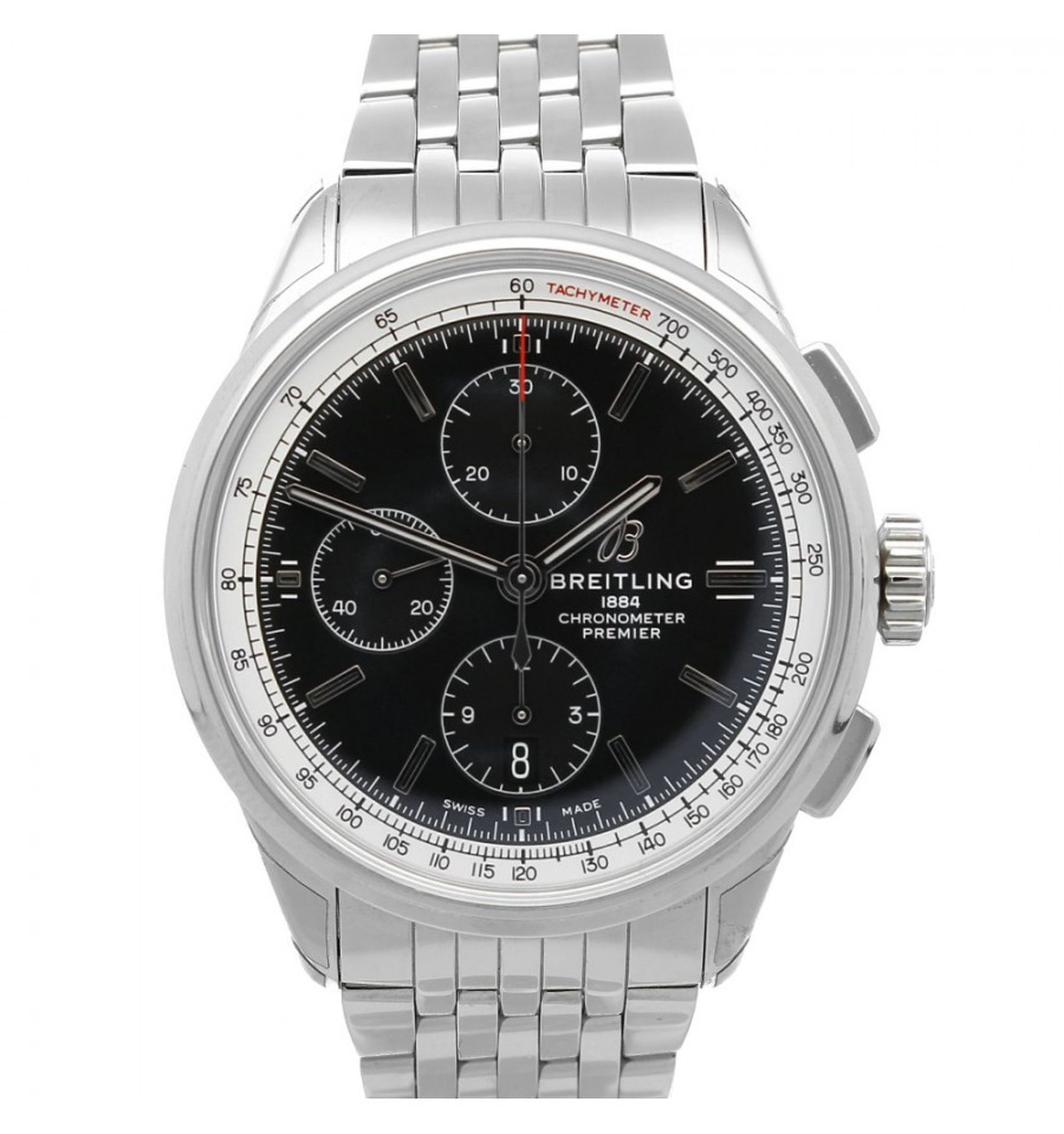What is it?
On a large number of wristwatches, a scale from approx. 500 to 60 can be found on the sloping edge of the dial or directly on the edge of the case. This is the so-called tachymeter scale – it not only serves as an attractive decoration on men’s watches, but also has a practical function. What exactly the tachymeter is all about, we will explain in today’s blog post.

What is a tachymeter anyway?
A look at the history of the tachymeter quickly reveals that measuring speed has a long tradition. The origin of the word lies in ancient Greek, where the term “tachymeter” is composed of the Greek words “ταχύς tachýs” for fast and “μέτρον métron” for measure or scale.
The tachymeter is usually located directly on the bezel or outer dial of wristwatches. The tachymeter scale together with its speed indications is therefore easy to recognise and cannot be overlooked. A prerequisite for measuring speeds is an additional stop function. Although you could also wait until the second hand has made a full revolution to measure speed, this is much more convenient with the stop function. This is precisely why the tachymeter scale is found on almost all chronographs.
How does a tachymeter work?
Now we have come to another important question: how exactly does this tachymeter work? The tachymeter scale represents the reciprocal of the hour that has passed since the start of the time measurement. Normally, counting starts at 12 o’clock sharp. However, there are also some wristwatches on which the tachymeter scale starts at 6 o’clock.
An example to illustrate this:
– After 15 seconds, 1/240th of an hour has passed, because an hour has a total of 3600 seconds. For this reason, the value at 15 seconds is 240. At 30 seconds, 1/120th of an hour has passed, so the value on the scale is 120.
How can speed be calculated using a tachymeter?
To measure speed, you need to know the length of the distance. This process is easiest with a distance of 1 km, because in this case no further conversion is necessary. However, if the distance is different, the value read on the tachymeter scale must be converted. For the sake of simplicity, in the following example we will use the distance of 1 km just mentioned:
Let us imagine that we have covered a distance of 1 km in 40 seconds. In this case, our tachymeter would show a value of 90:
90 x 1 hour x 1 km = 90 km/h.
This calculation method is not only valid for measuring car speeds, but also for ships. It can also be used to determine the speed of a filling process.
Of course, the tachymeter is not only intended for measuring high speeds, but can also be used for running or walking distances. For this, only the reference value of the measurement must be adjusted.
Example: Let’s imagine we run a distance of 200 m in 50 seconds. In this case, the value 72 would appear on the tachymeter scale:
72 x 1 hour x 0.2 km = 14.4 km/h
As soon as the distance is known, speeds can be calculated without any problems.

FAQ
In the last part of our blog post, we would like to address the most frequently asked questions about wristwatches with tachymeters. These include the following:
Are there alternatives to the tachymeter?
Nowadays, tachymeters are used less and less. This is understandable, because in the modern digital age of smartphones, navigation devices and the like, there are now much simpler options. Nevertheless, the tachymeter in watches is still a nice gadget and the tachymeter scale is an attractive decoration.
Who can use a tachymeter particularly well?
Especially on the wrists of runners and sports pilots, wristwatches with this practical function certainly look good. Furthermore, speed measurement by means of a tachymeter is also useful on the water, for example for captains. The same applies to the measurement of flow velocity. Especially people who often have to deal with water in their work can definitely benefit from such a chronograph.

Which brands like to use watches with tachymeters?
Special tachymeters can be found on watches from Alpina, for example. But Breitling also still likes to produce watches with elegant tachymeter scales. Of course, this also applies to a large number of other brand manufacturers.
Why do most tachymeter scales only go up to a maximum of 500?
Most scales on popular wristwatches often only go up to a maximum of 500 units per hour. The answer to why is basically quite simple, because if the tachymeter scale went beyond this value, the measurement would be far too inaccurate. After all, even small deviations of only a tenth of a second in the range above 500 result in enormously large deviations in the units. Accordingly, depending on the watch, the scale only goes up to a maximum of 500.
Can I also measure my pulse with a tachymeter?
If the pulse is measured at the doctor’s, counting starts either when the second hand is at the 12 o’clock position or at the 6 o’clock position. Accordingly, the pulse can also be read off the tachymeter scale without any problems.
This post is also available in: German


